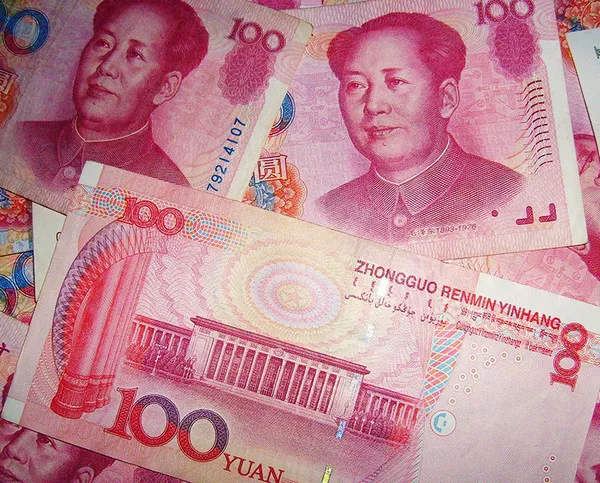China, one of the world’s economic powerhouses, is known for its rich history, culture, and, of course, its distinctive currency. But what do you call Chinese money? In this article, we’ll explore the various terms used to refer to Chinese currency, delve into the history of Chinese money, and shed light on its unique characteristics in the global financial landscape.
The Yuan: The Official Name
When it comes to the official name of Chinese currency, the term “Yuan” (CNY) is the correct designation. The Yuan is the basic unit of the renminbi (RMB), which is the official currency of the People’s Republic of China. The Yuan is used in everyday transactions, similar to how the U.S. dollar or the Euro is used in the United States and Europe, respectively.
Renminbi vs. Yuan: Clarifying the Terminology
Before delving further into the history of the Chinese currency, it’s important to clarify the difference between “Renminbi” and “Yuan.”
Renminbi (RMB): Renminbi is the official currency of China, and it serves as the broader term encompassing all forms of the Chinese currency. It literally means “People’s Currency” and is abbreviated as RMB. Renminbi banknotes and coins are used to make transactions across the country.
Yuan (CNY): Yuan is a unit of the Renminbi, similar to how dollars are units of the U.S. currency. When you refer to prices or discuss Chinese money in everyday transactions, you typically use the term “Yuan.” For example, a cup of coffee may cost 20 Yuan.
Historical Overview of Chinese Money
The history of Chinese money is fascinating and dates back thousands of years. Throughout its long history, China has seen a variety of monetary systems and currencies. Here are some key points in the evolution of Chinese money:
Cowry Shells: Some of the earliest forms of currency in ancient China were cowry shells, which were used as a medium of exchange as far back as the Shang Dynasty (16th-11th centuries BC). These small, shell-shaped objects held value and were widely used in trade.
Metal Coins: The first metal coins in China were cast during the Warring States period (476-221 BC). These coins were made of various metals, including bronze, iron, and gold, and featured inscriptions that indicated their value and origin.
Paper Money Invention: China is renowned for being the first country to issue paper money. The use of paper money began during the Tang Dynasty (618-907 AD) and later became more widespread during the Song Dynasty (960-1279 AD). These early paper banknotes, known as “jiaozi,” were used as a convenient and more portable alternative to metal coins.
The Ming Dynasty: During the Ming Dynasty (1368-1644 AD), the Chinese government standardized the use of paper money and issued the “jiaochao” banknotes. These banknotes helped facilitate trade and economic growth.
Foreign Influence: The Opium Wars in the mid-19th century marked a significant turning point for Chinese currency. After the Treaty of Nanking in 1842, the Chinese currency system saw increased influence from foreign powers, resulting in a combination of different currencies in circulation.
Modern Era: In 1949, when the People’s Republic of China was established, the Renminbi was officially introduced as the country’s currency. The Chinese government has since modernized the financial system, further standardizing and regulating the use of the Yuan.
Unique Features of Chinese Money
Chinese money, like any other currency, has unique features that set it apart. Some of these features include:
Pictorial Elements: Renminbi banknotes often feature iconic Chinese landmarks, historical figures, and scenes from Chinese culture. These visually appealing banknotes showcase the rich heritage of China.
Security Features: Chinese banknotes incorporate advanced security features to deter counterfeiting. These features may include holographic strips, color-changing ink, and intricate watermarks.
Denominations: The Renminbi is available in various denominations, including 1, 5, 10, 20, 50, and 100 Yuan. The use of paper currency is more prevalent in everyday transactions, while coins are less commonly used.
Digital Currency: China has been at the forefront of developing digital currency. The Digital Currency Electronic Payment (DCEP), commonly referred to as the Digital Yuan, is a digital version of the Chinese currency that is gaining momentum as a means of making payments and conducting financial transactions.
Global Significance of the Yuan
In recent years, the Chinese Yuan has gained increased prominence on the global stage. Here are a few key points highlighting its significance:
Reserve Currency: In 2016, the International Monetary Fund (IMF) included the Chinese Yuan in the basket of reserve currencies that make up the Special Drawing Rights (SDR), alongside the U.S. dollar, Euro, Japanese Yen, and British Pound. This acknowledgment signaled the Yuan’s growing importance in the international financial system.
Trade Currency: China’s position as a major global trade partner has led to a significant increase in the use of the Yuan for international trade settlements.
Belt and Road Initiative: China’s ambitious Belt and Road Initiative (BRI) encourages international use of the Yuan in infrastructure projects, trade, and investment along the BRI routes, further extending its influence.
Capital Market Opening: China has been gradually opening up its capital markets to foreign investors, allowing them to invest in Chinese equities, bonds, and other financial instruments. This move is driving demand for the Yuan in international investment portfolios.
Conclusion
Understanding what to call Chinese money is a journey through history, culture, and finance. The official term is “Yuan,” but it is part of the broader currency known as “Renminbi.” Chinese money has come a long way, from cowry shells to the Digital Yuan, reflecting the nation’s rich history and its dynamic role in the global economy.
The Yuan’s growing significance on the world stage highlights China’s position as a major player in international finance and trade. As China continues to open up its financial markets and develop its digital currency, the global role of the Yuan is expected to expand even further. This transformation represents a unique blend of tradition and innovation in the realm of Chinese currency.


